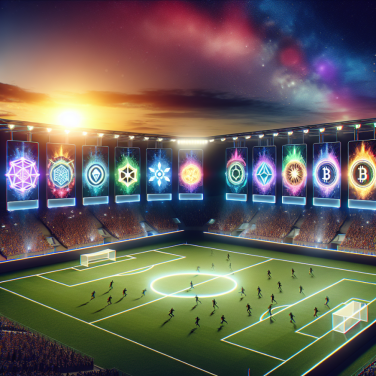Embracing Technology to Enhance the Nightlife Experience
In an effort to revitalize nightlife and modernize the club scene, industry leaders are increasingly embracing technology to enhance the experience for patrons. One of the most significant changes has been the integration of immersive audio-visual technologies. Cutting-edge sound systems paired with high-resolution LED screens and synchronized lighting can transform a simple night out into a multi-sensory experience. Clubs have started to implement 3D projection mapping, creating dynamic visuals that morph and change in tune with the music, turning walls and surfaces into canvases for digital art.
An exciting innovation is the use of virtual reality (VR) and augmented reality (AR) in clubs. VR technology can transport clubgoers to entirely different worlds, while AR enhances the real-world environment with digital overlays. Imagine dancing on a virtual beach or amidst the stars, all while actually being in a club. With AR, information about songs or special offers on drinks could be displayed in real-time, adding a new layer to the club-going experience.
Social media and apps have been leveraged by clubs to create a more personalized experience. Clubbers can now pre-order drinks, request songs, and reserve VIP areas, all from their smartphones. The data collected from these apps also allows clubs to tailor their events and promotions to match the preferences of their regular visitors, ensuring that each night out is better than the last.
Wearable technology also promises to elevate the nightclub scene. Wristbands that sync with the beat of the music, or change color based on your dance movements or the part of the club you're in, make the night more interactive. These wearables can also serve as digital wallets, enabling customers to pay for drinks and services with a simple tap, creating a seamless experience from the dance floor to the bar.
Another aspect where nightlife has benefited from technology is in security. Facial recognition cameras and ID scanning systems ensure a safe environment and help to quickly identify individuals who may have been involved in incidents or whose past behavior has flagged them as potential risks. This improves safety, allowing guests to relax and enjoy their time without concern.
Lastly, the integration of sound zoning technology has enabled nightclubs to cater to diverse music tastes simultaneously. Different areas of a club can feature different types of music at varying volumes, all without interfering with each other. This allows patrons to choose the atmosphere that best suits their mood without the need to hop from one club to another.
Read also:
Debunking Myths: The Truth about the Interior of Golf Balls
Pioneering Sustainable Practices in Today's Nightclubs
In recent years, the nightclub scene has seen a surge of innovation, not just in terms of music and entertainment, but also in how clubs address sustainability. With an increasing emphasis on environmental consciousness, today's nightclubs are pioneering sustainable practices that are both changing the industry and setting new standards for social responsibility.
One of the most notable advancements in the club scene is the integration of green energy solutions. Many modern clubs are now utilizing solar panels and wind turbines to power their operations, significantly reducing their reliance on non-renewable energy sources. By investing in renewable energy, these clubs are not only cutting their utility costs but also demonstrating a commitment to combating climate change.
Another area where nightclubs are making strides is in their efforts to minimize waste. Several clubs have adopted zero-waste policies, ensuring that all materials are either reusable, recyclable, or compostable. These establishments frequently partner with local recycling and composting services, and they encourage patrons to participate in these green initiatives through incentives and educational campaigns.
In addition to energy and waste management, water conservation has become a priority for eco-conscious clubs. Innovations such as low-flow toilets and urinals, waterless sanitation systems, and efficient tap aerators are becoming more common. Some clubs have even installed innovative rainwater harvesting systems to flush toilets and irrigate indoor plants or vertical gardens, which serve the dual purpose of decoration and air purification.
The materials used in construction and renovations also reflect a shift toward sustainability. Clubs are selecting materials based on their environmental impact, opting for things like reclaimed wood, recycled metal, and non-toxic paints. This not only reduces the demand for raw materials but also creates a unique aesthetic that resonates with the values of environmentally aware clubgoers.
Lighting is another aspect where nightclubs are pushing the boundaries of sustainability. LED lights, which consume a fraction of the energy used by traditional bulbs, are becoming the standard in club design. These lights can also be integrated into dynamic, programmable systems that create immersive experiences without the energy drain associated with conventional club lighting.
Moreover, some clubs are going beyond their physical operations and looking at the broader impact of their activities by offering incentives for patrons who use public transport, bikes, or carpooling to get to the venue. By doing this, they are helping to reduce the carbon footprint associated with travel to and from the club.
In terms of social responsibility, clubs are also recognizing the need to promote sustainable practices among their stakeholders.





